


The article emphasizes strategies to enhance the design of electronic case reports (eCRFs) in clinical research. It delineates ten pivotal strategies, including:
These strategies are all aimed at bolstering data integrity, ensuring compliance, and improving overall efficiency in clinical trials.
In the rapidly evolving landscape of clinical research, the design of electronic case report forms (eCRFs) is crucial for ensuring data integrity and regulatory compliance. Effective strategies can significantly enhance the quality and efficiency of eCRFs, ultimately leading to faster and more reliable clinical trials. However, a pressing challenge persists: how can stakeholders balance the need for customization with the necessity of adhering to stringent industry standards? This article delves into ten innovative strategies that not only streamline eCRF design but also empower researchers to confidently navigate the complexities of modern clinical studies.
bioaccess® leverages its extensive research expertise to accelerate the development of electronic case reports. With a pioneering approach to medical flexibility, bioaccess® ensures that these forms are meticulously aligned with regulatory standards while being customized to meet the unique requirements of innovators in Medtech, Biopharma, and Radiopharma. This strategic approach not only expedites the approval process but also streamlines information collection, significantly enhancing the quality of clinical studies.
Research indicates that well-structured electronic case report forms can facilitate a 30% reduction in overall research timelines, enabling faster market entry for new therapies. Furthermore, the implementation of tailored eCRFs has been shown to improve data integrity, with error rates dropping below 5%, thereby fostering trust among stakeholders and participants.
By emphasizing compliance and efficiency, bioaccess® establishes itself as a leader in the successful implementation of electronic case reports, ultimately driving superior outcomes in clinical research.

To enhance semantic interoperability, it is essential that electronic case report (eCR) designs adhere to established information standards, particularly those set forth by the Clinical Data Interchange Standards Consortium (CDISC). This adherence not only guarantees that the information collected is readily shareable but also ensures its comprehensibility across various platforms and stakeholders.
By utilizing standardized terminologies and formats, researchers can streamline the processes of information integration and analysis, ultimately leading to improved clinical outcomes. Moreover, efficient Case Report Forms (CRFs) significantly reduce the likelihood of errors in data collection, underscoring the critical need for the application of CDISC standards.
Furthermore, the synergistic application of both semantic and syntactic standards bolsters interoperability, making it a crucial component in the development of effective electronic case report.
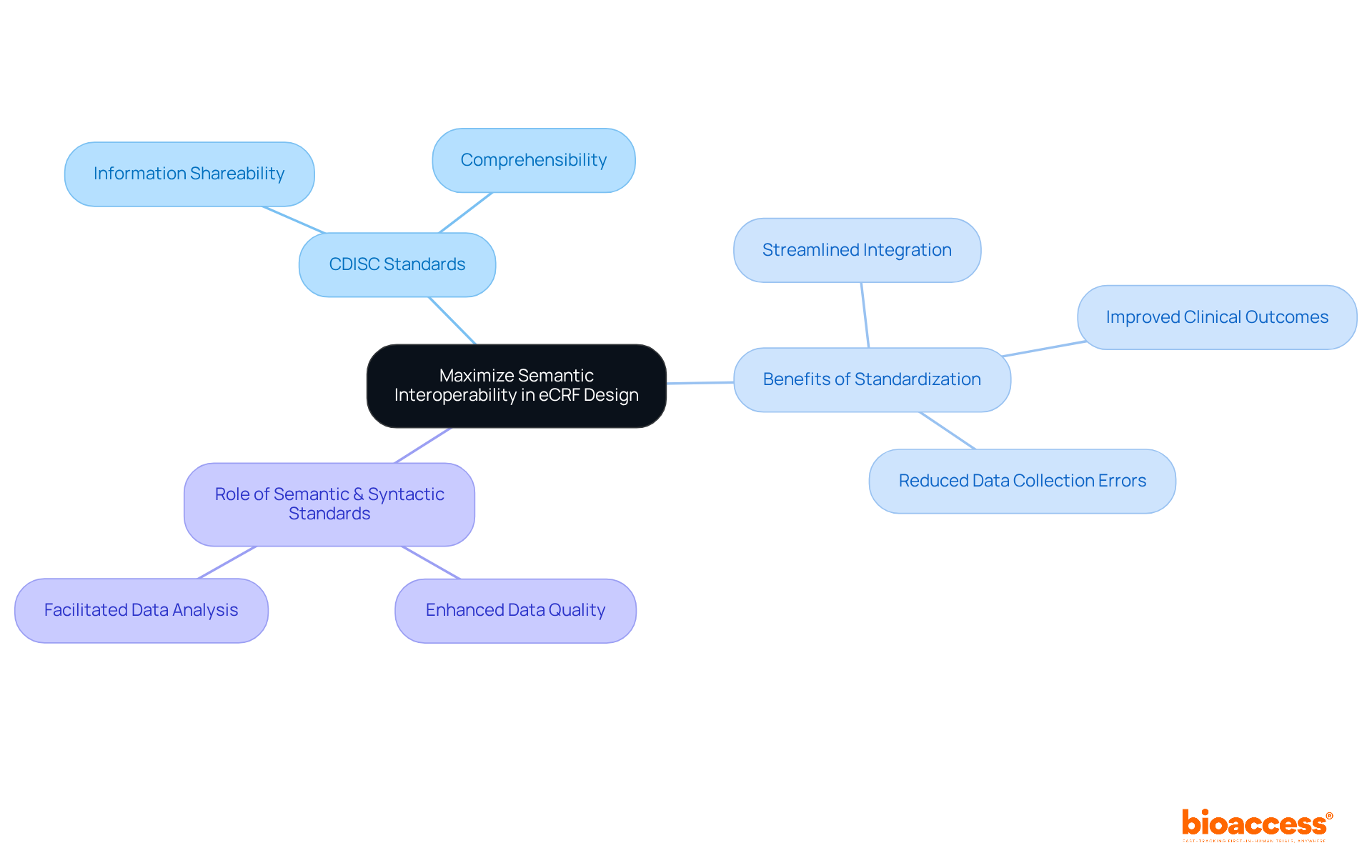
Integrating Core Data Elements (CDEs) into the design of electronic case reports is essential for achieving uniform information collection across clinical studies. CDEs are predefined information fields that ensure essential details are captured consistently, facilitating effective comparison and analysis. Research indicates that utilizing standardized information collection techniques can significantly enhance the reliability of findings.
For instance, studies have shown that electronic case reports can reduce entry mistakes to 0%, compared to a 5% error rate associated with traditional paper forms. By leveraging CDEs, researchers not only bolster the integrity of their data but also streamline the regulatory approval process, ultimately leading to quicker and more efficient trials.
This approach aligns with the growing emphasis on standardization within the Medtech industry, where over 500 organizations have adopted CDISC standards to enhance data integrity and regulatory compliance. As highlighted by industry experts, standardizing information collection is vital for improving clinical trial outcomes and ensuring that innovative therapies reach patients more swiftly.
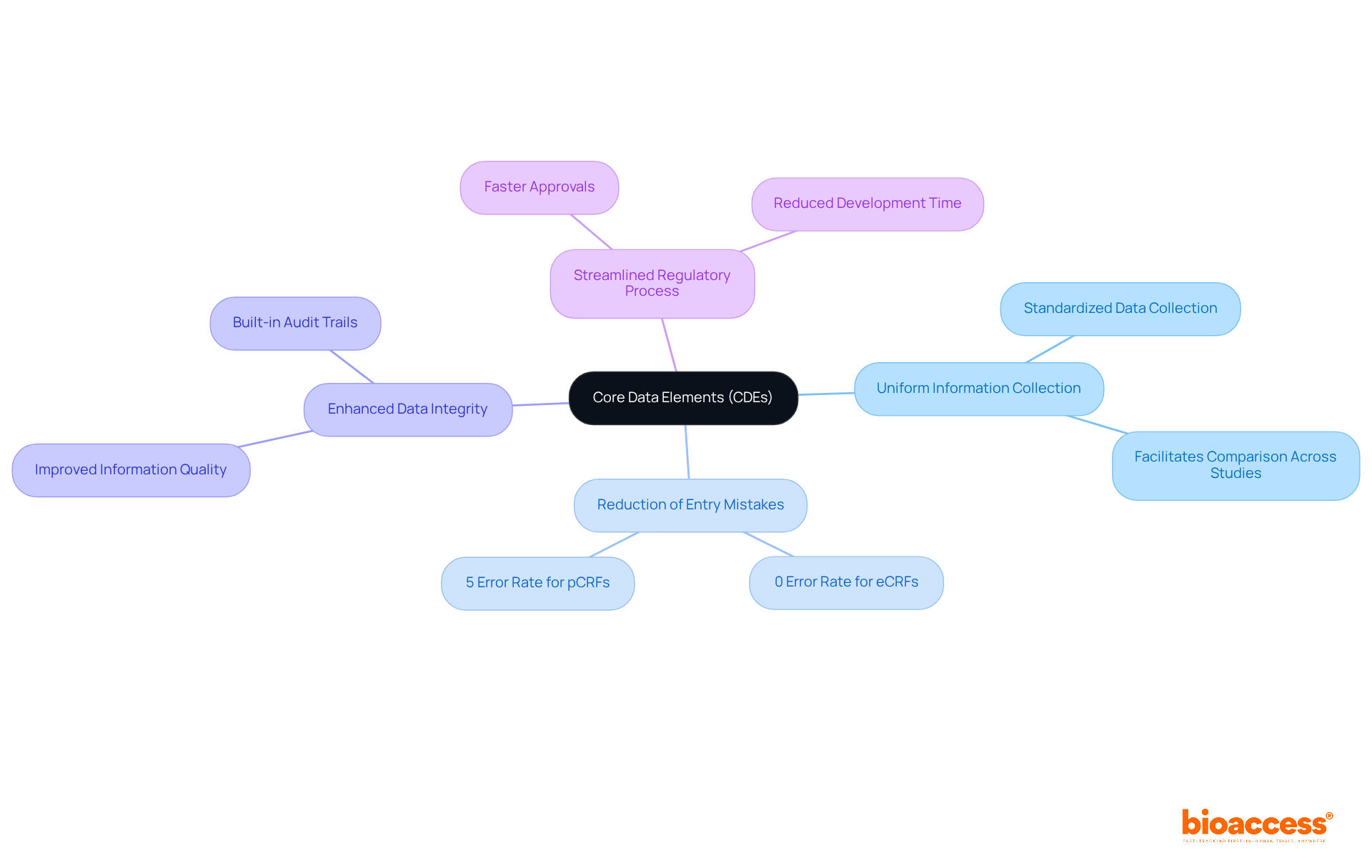
Establishing rigorous standards for Case Report Form (CRF) metadata is crucial for adhering to regulatory guidelines. This necessitates a clear definition of information types, formats, and validation rules that comply with industry standards. By integrating robust metadata into the electronic case report structure, researchers can significantly enhance information integrity, which is essential for ensuring compliance and facilitating smoother audits and assessments by regulatory authorities.
Trials that impose stringent metadata standards can experience up to 30% fewer regulatory inquiries during audits, underscoring the importance of meticulous information management. Furthermore, aligning the electronic case report (eCRF) design with metadata standards not only simplifies the regulatory submission process but also elevates overall data quality, ultimately leading to more effective trials.
Notably, organizations can secure ethical approvals in as little as 4-6 weeks with standardized information entry, while the average duration of recruitment with electronic case reports is 22.4 ± 9 months, demonstrating their efficiency compared to traditional methods. Additionally, bioaccess offers extensive trial management services, including:
These services are essential for ensuring that these standards are met. As Qualityze aptly states, 'The electronic case report in clinical trials is not merely a collection tool—it’s an essential enabler of high-quality, audit-ready, and efficient studies.

Precise phrasing in the electronic case report is crucial for gathering trustworthy information. Questions must be clear, concise, and free of jargon to avoid participant confusion. Research shows that the wording of questions significantly impacts understanding; for example, only 52.1% of participants grasped the concept of randomization, and those evaluated with open-ended questions often struggle to comprehend key elements of informed consent. Conversely, the use of closed-ended questions correlates with higher rates of understanding regarding the study's purpose.
By employing clear language, researchers can enhance participant comprehension, leading to information that more accurately reflects their responses. This approach not only improves the quality of the data collected in the electronic case report but also fosters trust and engagement among participants, ultimately bolstering the integrity of clinical research.
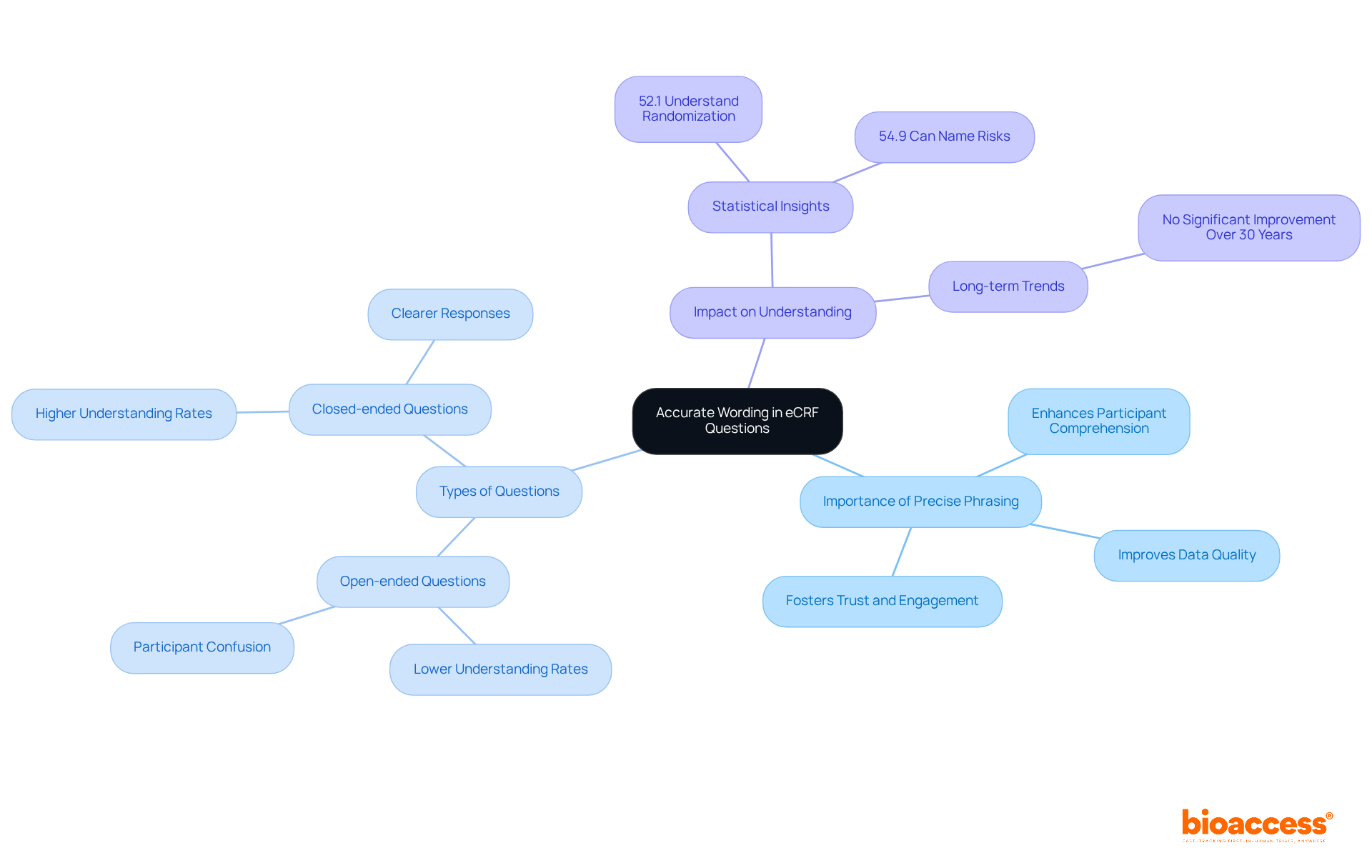
Ensuring semantically coherent answer options in the electronic case report forms (eCRFs) is paramount for obtaining accurate participant responses. Answer choices must be mutually exclusive and collectively exhaustive, empowering participants to select the most relevant option. This clarity not only enhances the quality of information but also significantly boosts participant engagement and satisfaction throughout the study.
Research indicates that well-organized answer choices can lead to a substantial improvement in quality metrics, as participants are less likely to misinterpret questions. Furthermore, experts underscore that clear and precise wording in answer choices cultivates a better understanding of the survey, ultimately resulting in more reliable data collection.
For instance, the ORCHESTRA project analyzed over 3,700 variables to identify similar information across studies, highlighting the critical importance of clarity in response formulation. By prioritizing clarity in answer design, researchers can create a more engaging experience for participants, which is essential for the success of clinical studies.
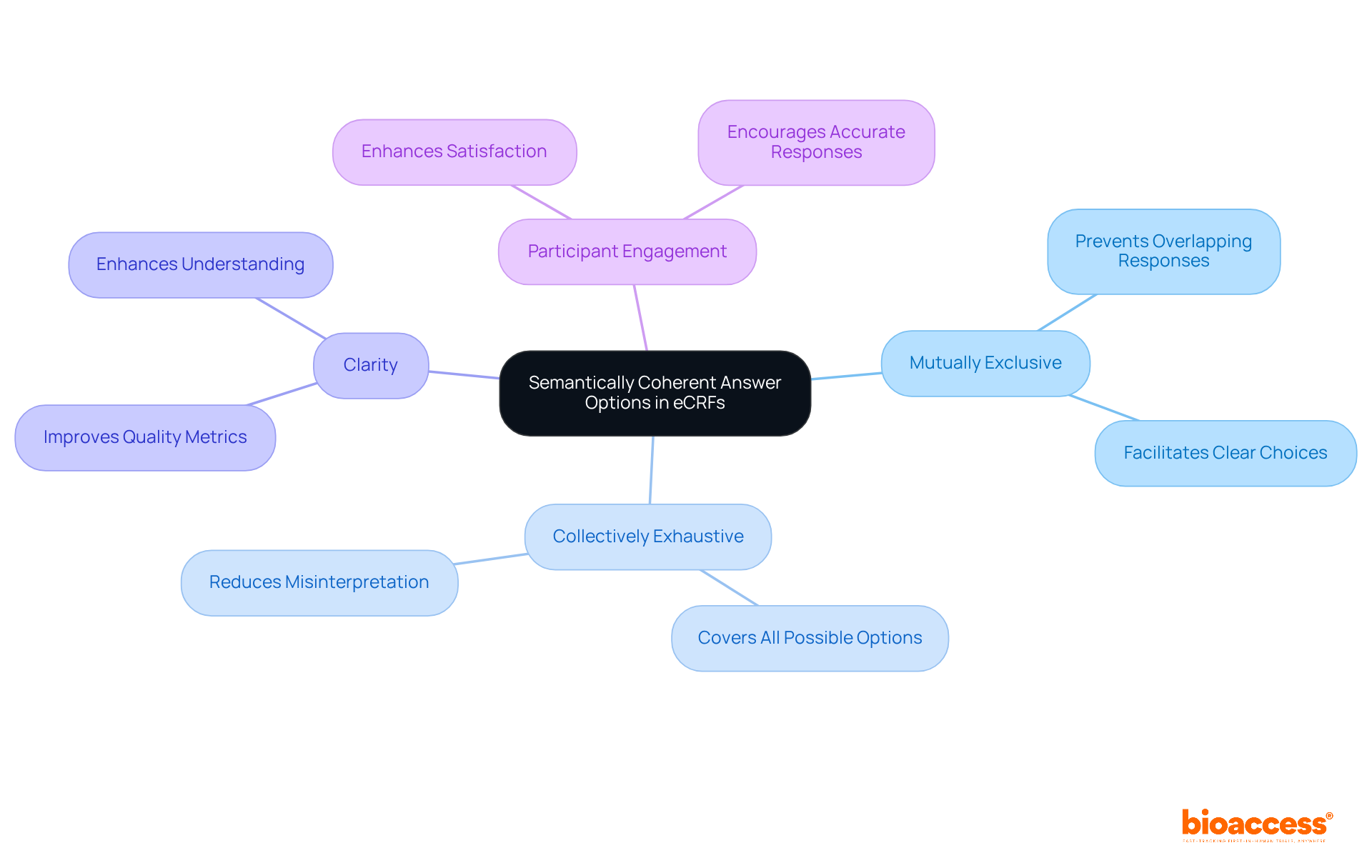
In electronic case report forms (eCRFs), specifying the units of measure for all quantitative information is essential. This includes clarifying whether measurements are in metric or imperial units and providing any necessary conversion factors. Clear definitions of units not only prevent misinterpretation of information but also enhance the comparability of results across various studies.
For instance, in a clinical trial assessing drug efficacy, using inconsistent units can lead to significant discrepancies in data interpretation, ultimately affecting study outcomes. By adhering to standardized units, researchers can ensure that their findings are accurately understood and effectively communicated, fostering better collaboration and insights within the scientific community.

Applying user-centered design principles in the creation of electronic case reports is essential for enhancing usability in clinical research. This approach emphasizes the importance of understanding the needs and preferences of both participants and researchers. By conducting thorough usability testing and actively incorporating feedback, eCRFs can be designed to be intuitive and user-friendly. Such enhancements not only simplify information gathering but also significantly improve the participant experience, fostering greater engagement and satisfaction.
Usability specialists assert that careful planning can yield more efficient clinical research tools, ultimately enhancing data quality and outcomes in clinical trials. As highlighted by Don Norman, shortcomings in human-machine interaction frequently stem from a lack of understanding of fundamental principles, underscoring the significance of user-centered approaches in developing effective electronic case reports. Moreover, research indicates that five users can identify 85% of usability issues during ongoing testing, illustrating the critical role of usability testing in refining the electronic case report (eCRF) structure.
However, it is important to acknowledge the challenges associated with implementing user-centered approaches, such as conducting detailed studies of clinical workflows and recruiting participants for usability studies. Recognizing these challenges provides a balanced perspective on the topic and emphasizes the need for continued focus on user-centered design in clinical research.

Incorporating feedback loops into the eCRF design process is essential for fostering continuous improvement in clinical research. By actively soliciting input from both participants and researchers, designers can pinpoint pain points and identify areas for enhancement. This iterative method not only guarantees that electronic case report forms remain efficient and relevant but also significantly enhances the quality of information and participant satisfaction. Statistics indicate that the implementation of electronic case reports can lead to a substantial reduction in clinical study durations and improve data quality, ultimately influencing innovation success rates in clinical trials.
To implement continuous improvement in electronic case report forms, teams should establish a standardized feedback process that promotes open communication and collaboration. This may include:
As highlighted by industry specialists at bioaccess®, cultivating a culture of trust and transparency is vital for effective feedback cycles, fostering innovation and ensuring that electronic case report forms align with the evolving demands of clinical research.
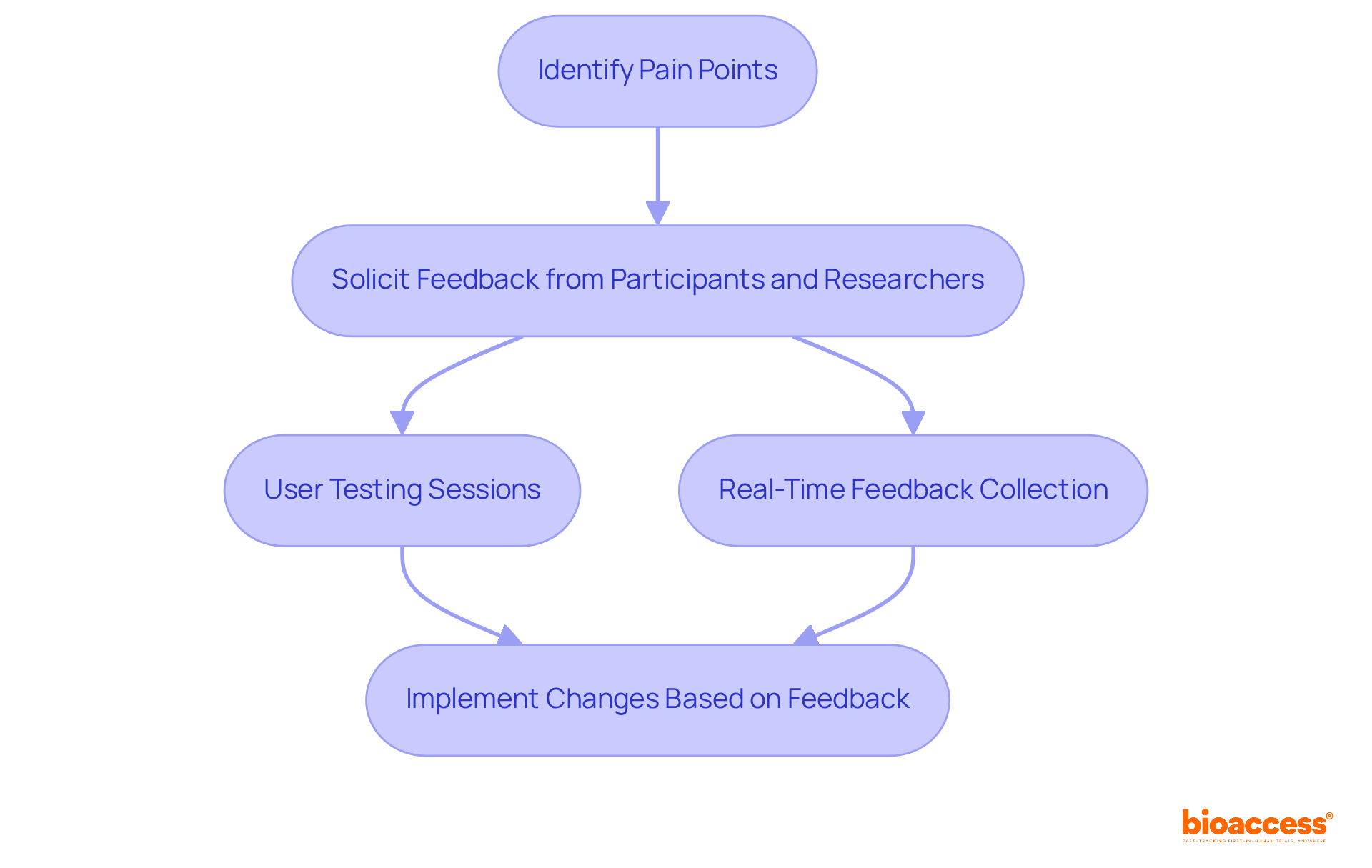
Providing comprehensive training and support for eCRF users is essential for maximizing their effectiveness in clinical research. This involves offering:
These resources empower users to navigate the system with confidence. By ensuring that all stakeholders are proficient in Good Clinical Practice (GCP) and the features of electronic case report forms, researchers can significantly enhance the efficiency of information collection and improve overall study outcomes.
Furthermore, the integration of real-time validation checks within electronic case report forms enhances the quality of information, while role-based access control and extensive audit trails guarantee security and compliance. User manuals that clearly outline procedures and troubleshooting tips serve as invaluable resources, enabling users to resolve issues independently and maintain data integrity throughout the study.
Ultimately, investing in robust user support systems is crucial for optimizing the performance of electronic case report forms and achieving successful clinical trial results.
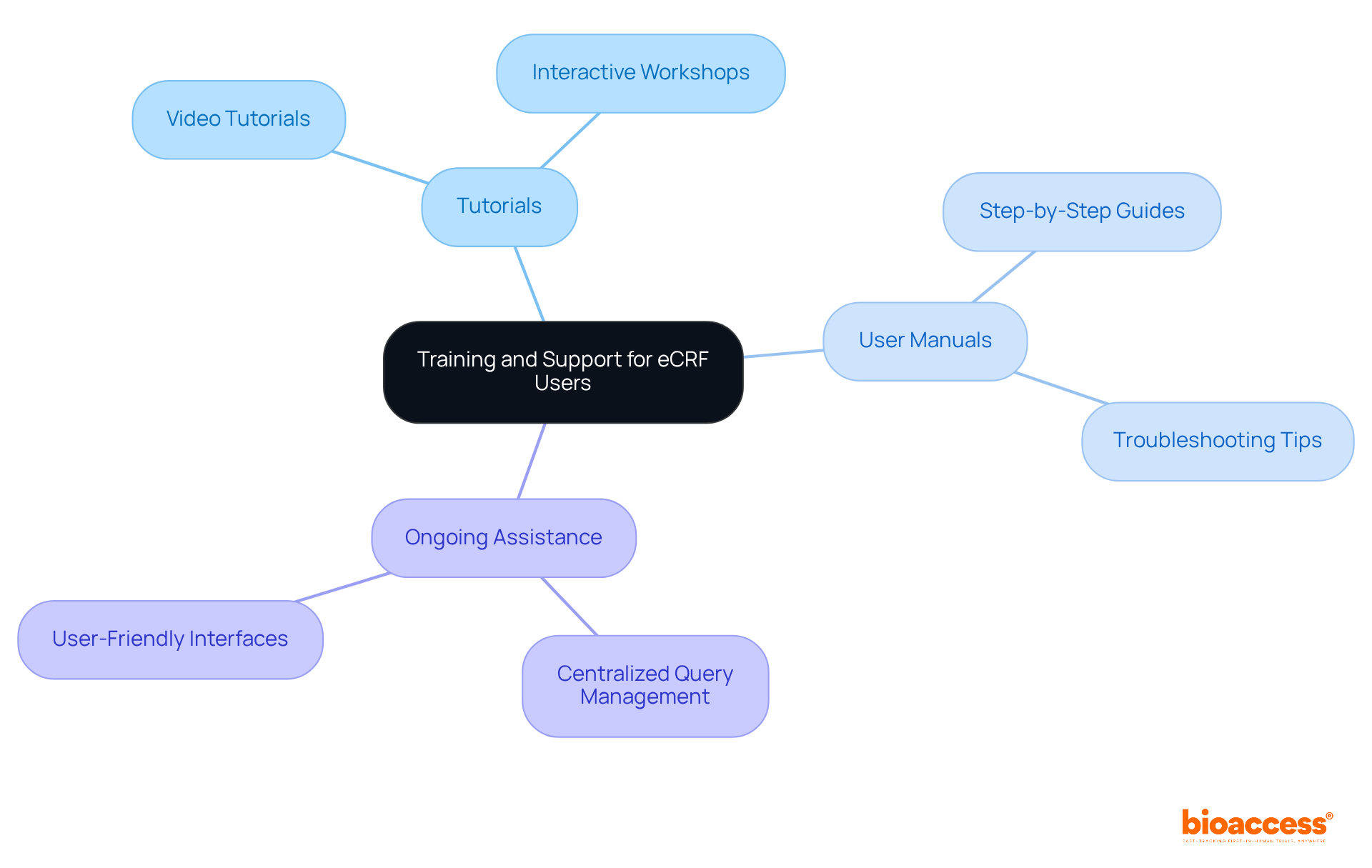
Enhancing electronic case report (eCRF) design is pivotal for improving clinical research outcomes and ensuring regulatory compliance. By adopting strategic approaches that emphasize standardization, user-centered design, and continuous improvement, researchers can significantly streamline data collection processes and foster trust among stakeholders. The meticulous focus on design not only accelerates the approval process but also enhances the overall quality of clinical studies.
This article outlines several key strategies, including:
Additionally, implementing robust metadata standards, providing comprehensive training, and establishing feedback loops for continuous improvement are crucial steps that can lead to significant reductions in error rates and research timelines. Each of these strategies contributes to creating a more efficient, reliable, and user-friendly environment for clinical research.
In conclusion, the significance of well-designed electronic case reports cannot be overstated. By prioritizing best practices in eCRF design, researchers can not only enhance data integrity and compliance but also ensure that innovative therapies reach patients more swiftly. Embracing these strategies is essential for driving progress in clinical research and ultimately improving patient outcomes. Engaging with services like those offered by bioaccess® can further empower organizations to achieve excellence in eCRF implementation, paving the way for successful clinical trials and meaningful advancements in healthcare.
What is bioaccess® and how does it contribute to electronic case report (eCRF) design?
bioaccess® is a clinical research service provider that accelerates the development of electronic case reports by leveraging extensive research expertise. It ensures that eCRFs are aligned with regulatory standards and customized to meet the unique needs of Medtech, Biopharma, and Radiopharma innovators, which expedites the approval process and enhances information collection quality.
How do well-structured electronic case report forms impact research timelines?
Well-structured electronic case report forms can facilitate a 30% reduction in overall research timelines, allowing for faster market entry of new therapies.
What improvements are associated with tailored electronic case report forms?
Tailored electronic case report forms improve data integrity, reducing error rates to below 5%, which fosters trust among stakeholders and participants.
What is the significance of semantic interoperability in eCRF design?
Semantic interoperability ensures that electronic case report designs adhere to established information standards, such as those set by the Clinical Data Interchange Standards Consortium (CDISC). This guarantees that collected information is shareable and comprehensible across various platforms and stakeholders.
How do standardized terminologies and formats affect clinical outcomes?
Utilizing standardized terminologies and formats streamlines information integration and analysis processes, ultimately leading to improved clinical outcomes and a reduced likelihood of errors in data collection.
What are Core Data Elements (CDEs) and why are they important?
Core Data Elements (CDEs) are predefined information fields that ensure essential details are captured consistently across clinical studies. They enhance the reliability of findings and facilitate effective comparison and analysis.
How do electronic case reports compare to traditional paper forms in terms of data entry errors?
Electronic case reports can reduce entry mistakes to 0%, while traditional paper forms have a 5% error rate, highlighting the advantages of using electronic formats.
How does the use of CDEs streamline the regulatory approval process?
By leveraging Core Data Elements, researchers bolster data integrity and standardization, which streamlines the regulatory approval process and leads to quicker and more efficient trials.
What is the role of CDISC standards in the Medtech industry?
Over 500 organizations in the Medtech industry have adopted CDISC standards to enhance data integrity and regulatory compliance, emphasizing the importance of standardization in improving clinical trial outcomes.